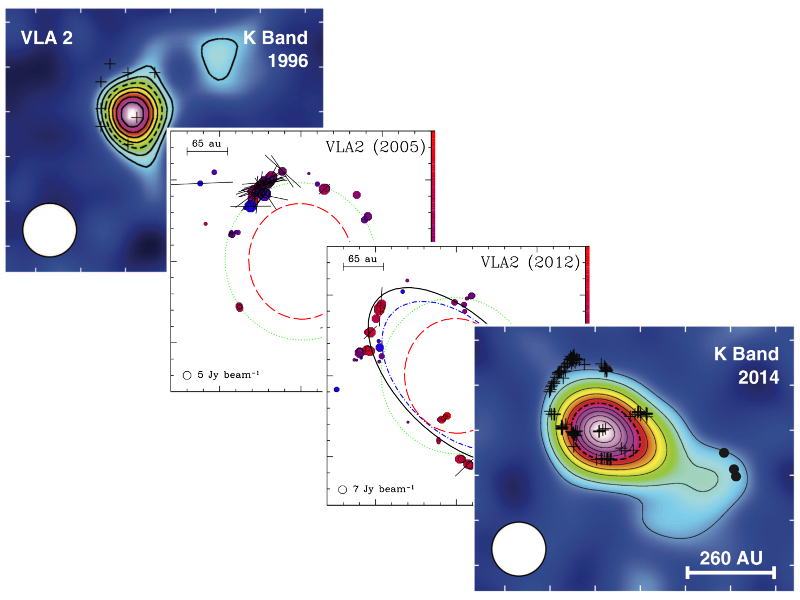| EPoS Contribution |
|
Observing Magnetic Fields and Collimation in Protostellar Jets
Carlos Carrasco-Gonzalez IRyA-UNAM, Morelia, MX | |
|
We know about the existence of protostellar jets since the 90s. Currently,
we know that protostellar jets are indeed fundamental in the star
formation process. Moreover, it is believed that protostellar jets are a
particular case of a more general, universal phenomenon, the astrophysical
jets. For example, it has been long proposed proposed that protostellar jets
are indeed a lower energy case of the better known relativistic jets, and
therefore, both types of jets should work in a very similar way. However,
after 30 years of knowing their existence, and their well established
importance, the exact mechanism through which the material is launched from
the protostar vicinity and collimated later into a jet remains unclear.
Two are the main reasons for this situation. First, the difficulty for the
magnetic field (one of the fundamental ingredients to form a jet) to be
observed in this case. And second, the difficulty for the collimation zone
(i.e., the 100 AU closest to the protostar) to be observed and resolved.
In this talk I will present a summary of three recent studies performed
through very sensitive high angular resolution radio observations of three
protostellar jets driven by massive protostars: 1) The detection of synchrotron emission from a protostellar jet, which allowed for the first time the study of its magnetic field; 2) the monitoring of a massive protostar driving a poor collimated wind which, after 18 years, collimated into a radio jet; 3) the highest angular resolution observations ever performed on a protostellar jet which allowed us to resolve the jet collimation zone. I will also discuss the consequences of these results in terms of the available models for the launching and collimation of protostellar jets. | |
 | |
| Caption: Observing the onset of outflow collimation in a massive protostar. Sequence of radio continuum and water masers observations towards the W75N-VLA massive protostar. The initially poor collimated wind observed in 1996, collimated into a radio jet in 2014. Adapted from Carrasco-Gonzalez et al. (2015), Science, 348, 114 | |
| Collaborators: L.F. Rodriguez, IRyA-UNAM, MX J.M. Torrelles, IEEC-CSIC, ES A. Sanna, MPIfR, DE G. Anglada, IAA-CSIC, ES J. Canto, IA-UNAM, MX S. Curiel, IA-UNMA, MX C. Goddi, JIVE, NE J.F. Gomez, IAA-CSIC, ES M. Hoare, UL, UK S.W. Kim, KASSI, KO J.S. Kim, NAOJ, JP J. Marti, UJ, ES M. Osorio, IAA-CSIC, ES G. Surcis, JIVE, NE W. Vlemmings, OSO, SW H. van Langevelde, JIVE, NE |
Key publication
Suggested Session: Magnetic fields |

